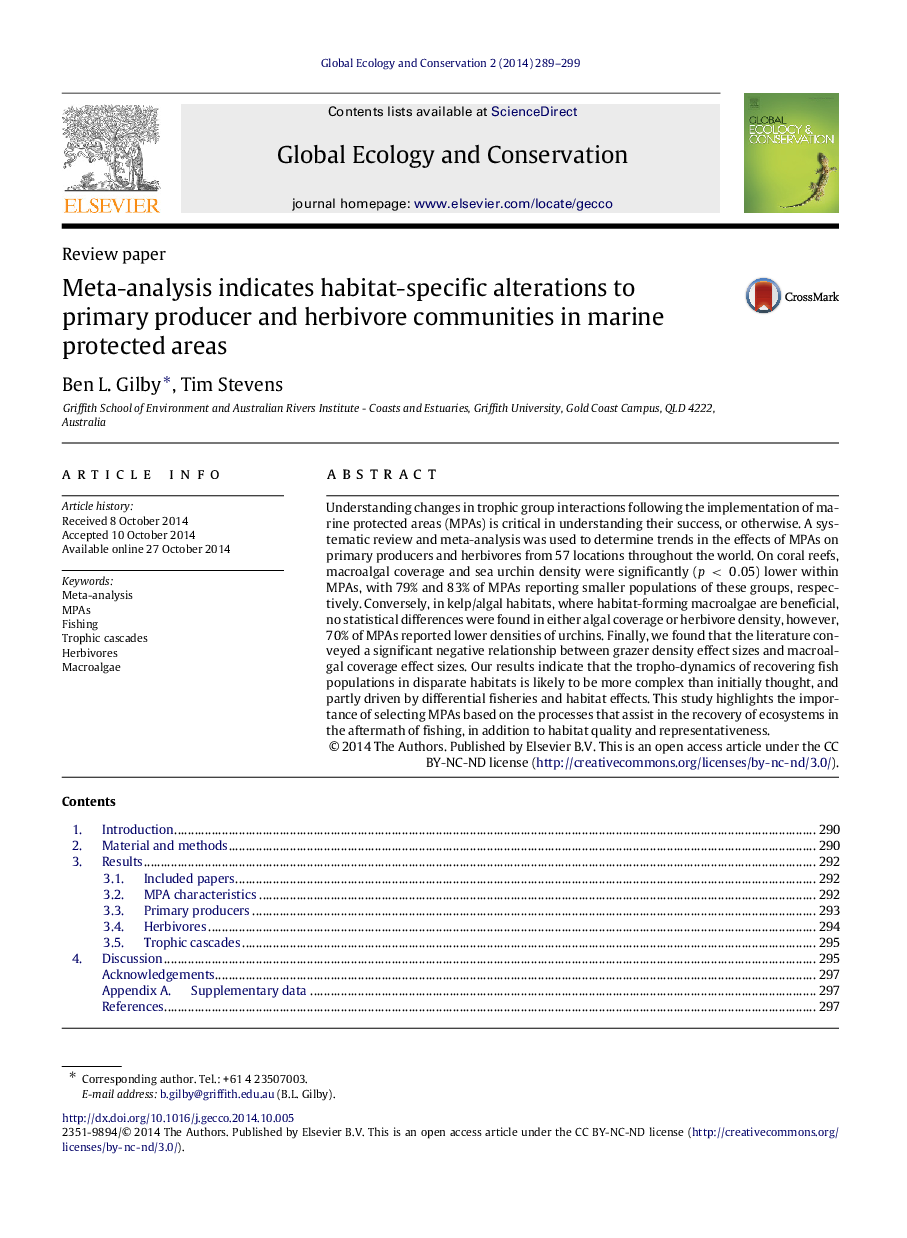| Article ID | Journal | Published Year | Pages | File Type |
|---|---|---|---|---|
| 4379691 | Global Ecology and Conservation | 2014 | 11 Pages |
Understanding changes in trophic group interactions following the implementation of marine protected areas (MPAs) is critical in understanding their success, or otherwise. A systematic review and meta-analysis was used to determine trends in the effects of MPAs on primary producers and herbivores from 57 locations throughout the world. On coral reefs, macroalgal coverage and sea urchin density were significantly (p<0.05p<0.05) lower within MPAs, with 79% and 83% of MPAs reporting smaller populations of these groups, respectively. Conversely, in kelp/algal habitats, where habitat-forming macroalgae are beneficial, no statistical differences were found in either algal coverage or herbivore density, however, 70% of MPAs reported lower densities of urchins. Finally, we found that the literature conveyed a significant negative relationship between grazer density effect sizes and macroalgal coverage effect sizes. Our results indicate that the tropho-dynamics of recovering fish populations in disparate habitats is likely to be more complex than initially thought, and partly driven by differential fisheries and habitat effects. This study highlights the importance of selecting MPAs based on the processes that assist in the recovery of ecosystems in the aftermath of fishing, in addition to habitat quality and representativeness.
